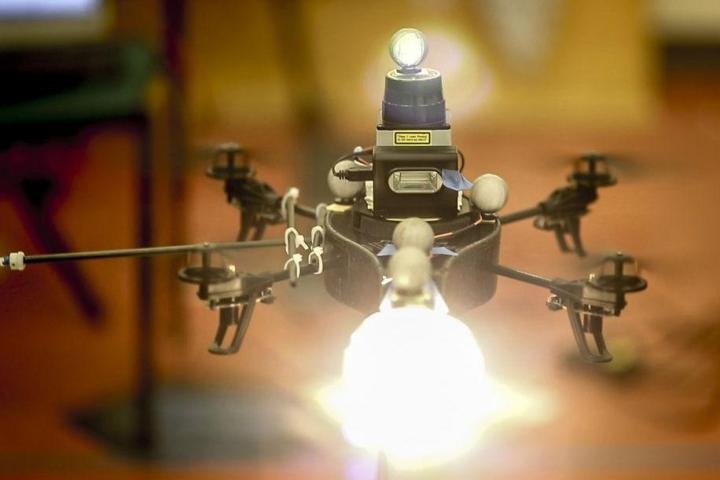
Researchers at MIT and Cornell University are looking to give modern photographers a helping hand by designing a series of autonomous drones that can help light photo shoots. The helicopter robots are equipped with a continuous-light source that produces an effect called “rim lighting” — a difficult technique in which only the edges of a photographer’s subject are lit very well.
Through the use of a camera-mounted interface, the photographer can indicate the direction from which the rim lighting should come, as well as the specific width of the lit border. The helicopter then files to the position it needs to be and adjusts its lighting accordingly. The drone can even maintain its rim width if the subject moves during the shoot.
According to the researchers, they chose to work with rim lighting because of how hard it is to master.
“It’s very sensitive to the position of the light,” said Manohar Srikanth, a postdoc at MIT and lead researcher on the project. “If you move the light, say, by a foot, your appearance changes dramatically.”
Srikanth noted that the drones can adjust to the photographer’s movements, as well. Every 20 seconds, the camera transmits an image to a computer running a control algorithm, updating the system on the photographer’s new position. The algorithm then evaluates the rim width and shifts the helicopter accordingly.
The researchers hope their system will cut down on set up time for lighting equipment, which is crucial to the art of photography. The enlightening drone prototype will be on display at the International Symposium on Computational Aesthetics in Graphics, Visualization and Imaging in August.
So good news for tech savvy photographers, as well as anyone looking for an intense reading light.
[Image courtesy of MIT]
Editors' Recommendations
- Meet the MIT artist who builds with fungus and paints with swarms of drones
- The world needs a drone traffic control system, so AirMap is building one
- New ‘shady’ research from MIT uses shadows to see what cameras can’t
- Flying meds: UPS uses drones for deliveries to CVS customers for first time
- CVS and UPS join forces for drone deliveries to customers’ homes


